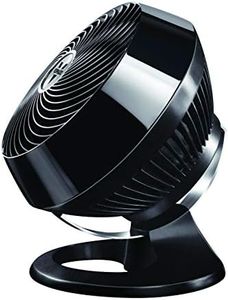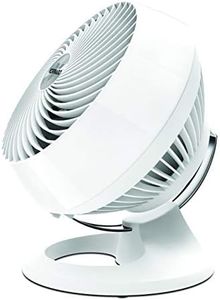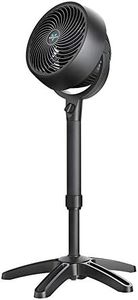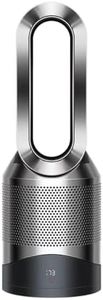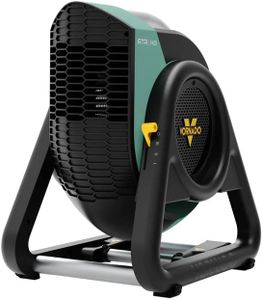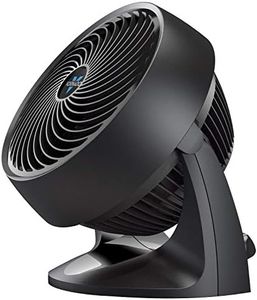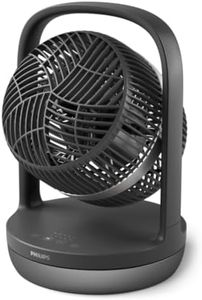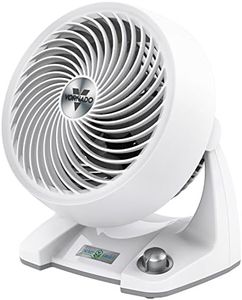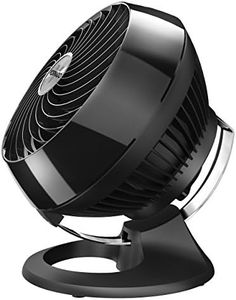We Use CookiesWe use cookies to enhance the security, performance,
functionality and for analytical and promotional activities. By continuing to browse this site you
are agreeing to our privacy policy
10 Best Air Circulator Fans
From leading brands and best sellers available on the web.By clicking on a link to a third party's website, log data is shared with that third party.
Buying Guide for the Best Air Circulator Fans
When choosing an air circulator fan, it's important to think about where and how you'll use it. These fans are designed to move air efficiently throughout a space, promoting better air flow and keeping the room more comfortable. To select the right one for you, consider the size of your room, the level of air movement you want, and your preferences for controls, noise, and portability. Taking a close look at the key specifications will help you match your needs to the capabilities of the fan.Airflow (CFM)Airflow, often measured in cubic feet per minute (CFM), tells you how much air the fan can move. This is important because higher airflow means more effective circulation and cooling. Airflow numbers can range from below 500 CFM for smaller, tabletop models, to over 1500 CFM for larger, more powerful fans. If you have a small room or want gentle airflow, look at lower CFM values. For larger spaces or more intense air movement, aim for higher CFM ratings. Always consider the size of the area you'll be using the fan in to determine how much airflow is appropriate.
Fan Size (Diameter)The diameter of the fan (usually measured in inches) impacts both the area it can cover and how powerful it feels. Smaller fans, up to 10 inches, are portable and great for desktops or personal spaces. Medium-sized fans (12-18 inches) fit well in bedrooms or offices, offering a balance of size and coverage. Larger fans (20 inches and above) are more suitable for big rooms, living areas, or open spaces where you want to move a lot of air. Match the fan size to the place you plan to use it most.
Oscillation and Adjustable AnglesSome fans can pivot, tilt, or oscillate, which means they can send air in different directions or sweep back and forth. Adjustable angles are useful if you want to direct airflow exactly where you need it, while oscillation helps to circulate air more evenly throughout a room. If you want to cool a group of people or an entire area, look for oscillation features. For focused cooling, adjustable tilt or pivoting is more important.
Noise LevelNoise level, usually measured in decibels (dB), tells you how loud the fan is when operating. Lower decibel ratings mean the fan is quieter, which is essential for bedrooms, offices, or places where you value silence. Some people don’t mind a little white noise, but if you're sensitive to sound, look for fans specifically rated for quiet operation or those with noise-reducing features. If the fan will be used in a louder space, noise might be less of a concern.
Speed Settings and ControlsMost fans offer several speed options, letting you choose how strong the airflow is. More speed settings give you better control over comfort, while basic models might offer just two or three. Some fans also include features like remote controls, timers, or digital displays for convenience. Think about how much control you want: if you like adjusting airflow throughout the day, multiple speeds and easy-to-use controls are helpful.
Portability and Build QualityThis includes how easy the fan is to move, its weight, and how sturdy it feels. Lightweight, compact fans are easy to carry from room to room, but might be less stable. Heavier, more solid models provide stability and may last longer. If you'll be moving your fan often, look for one with a carrying handle or compact design. If it stays in one place, focus more on stability and build quality.
Power ConsumptionPower consumption refers to how much electricity the fan uses, usually listed in watts. More powerful fans generally use more energy, but there are models designed to be energy efficient. If you'll run the fan for long periods, or want to be mindful of energy use, check for efficiency ratings or compare wattages between fans of similar size and power.

